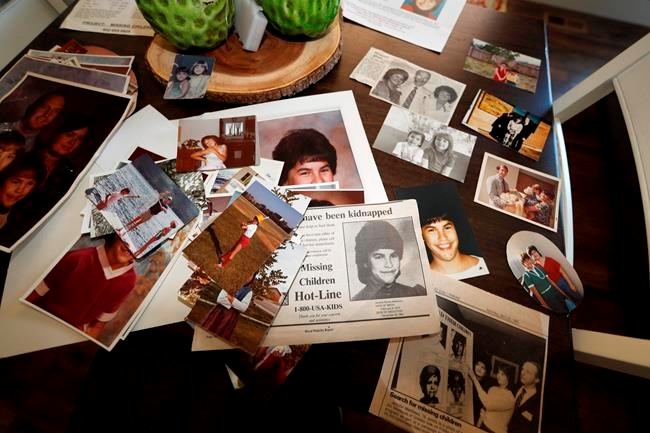DENVER — A former longshot Idaho gubernatorial candidate was indicted Tuesday in the murder of Jonelle Matthews, a 12-year-old Colorado girl whose disappearance after a holiday concert in 1984 was a mystery for decades.
Her former
Jonelle died from a single gunshot wound to her forehead, Weld County District Attorney Michael Rourke said. Her remains went undiscovered until 2019.
Jonelle's family searched fruitlessly for years as her picture was printed on milk cartons during a national missing-children campaign in the 1980s. “Always in the back of your mind you might have a little bit of of hope,” said Jennifer Mogensen, her sister. “We're extremely grateful we're getting this next step toward justice.”
Mogensen was a few years older, and she doesn't remember Pankey.
In the decades since he lived in Colorado, he has run as a Constitution Party candidate for Idaho governor in 2014 and in the Republican primary in 2018. It's the same year authorities said he became a person of interest in the girl's death.
He did not immediately return phone or email messages Tuesday from The Associated Press. But last week told the Times-News in Twin Falls, Idaho, that he was being framed in the case. He said his family had few connections to Jonelle or her family.
The two families did worship at the same church in Greeley, Colorado, and Pankey had made statements to police revealing “intimate knowledge about the commission of the crime" that was not public information, Rourke said.
Pankey had watched children from the Jonelle’s middle school walk home, according to charging documents. In 2008, his former wife heard him say at his son’s funeral: “I hope God didn’t allow this to happen because of Jonelle Matthews," prosecutors wrote.
Jonelle disappeared on Dec. 20, 1984, after being dropped home by a friend and the friend’s father. She was last seen at 8 p.m., entering the ranch-style home where she lived with her father, Jim; mother, Gloria; and sister. But when her father returned from her older sister's basketball game an hour later, Jonelle was gone.
The case came to the attention of then-President Ronald Reagan as his administration launched a national effort to find missing children. Her picture was printed on milk cartons across the U.S. as part of a project by the National Child Safety Council.
“For over three decades, the disappearance of Jonelle Matthews has left our community with many unanswered questions and a void that has not been filled. With the arrest of Steve Pankey ... some of these questions are starting to be answered,” said Greeley police department Chief Mark Jones.
Jonelle was considered missing for more than 30 years until workers digging a pipeline in July 2019 discovered human remains matching her dental records in a rural area southeast of Greeley, a city about 50 miles (80
Pankey has been a person of interest in the case, and last year he contacted the Idaho Statesman to tell his side of the story, fearing a possible arrest.
He told the newspaper that he was home with his then-wife the night Jonelle went missing, their car packed for an early-morning trip the next day to visit family in California. They took the trip and returned home six days later in 1984, Pankey said, and he heard the news of a missing child on the radio.
The ex-wife told prosecutors the trip was unexpected. On the way home, Pankey “uncharacteristically listened to the radio, searching for news accounts of Jonelle’s disappearance,” according to the indictment.
Mogensen told the AP in 2019 that the girl was strong and fiercely independent. In one family photo, Jonelle stood in the family’s home, with a hand on her hip. In another, she stares directly into the camera with her mouth set and eyes slightly narrowed. In countless others, her grin is wide and unguarded.
___
Nieberg is a corps member for the Associated Press/Report for America Statehouse News Initiative. Report for America is a
__
Associated Press writer Lindsay Whitehurst in Salt Lake City contributed to this story.
Patty Nieberg, The Associated Press



